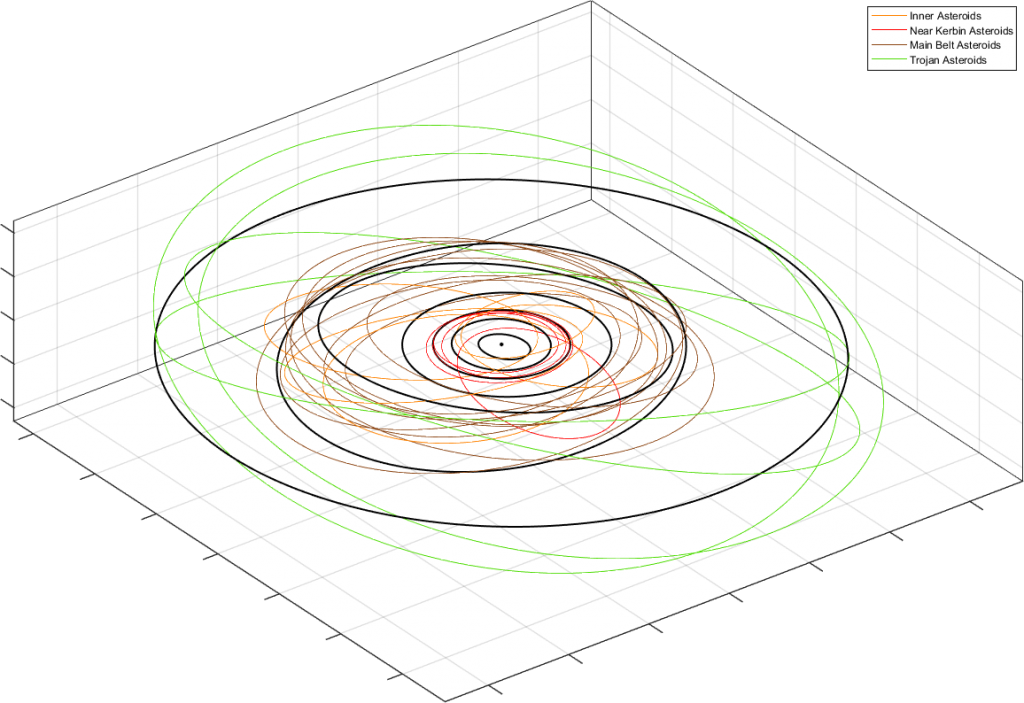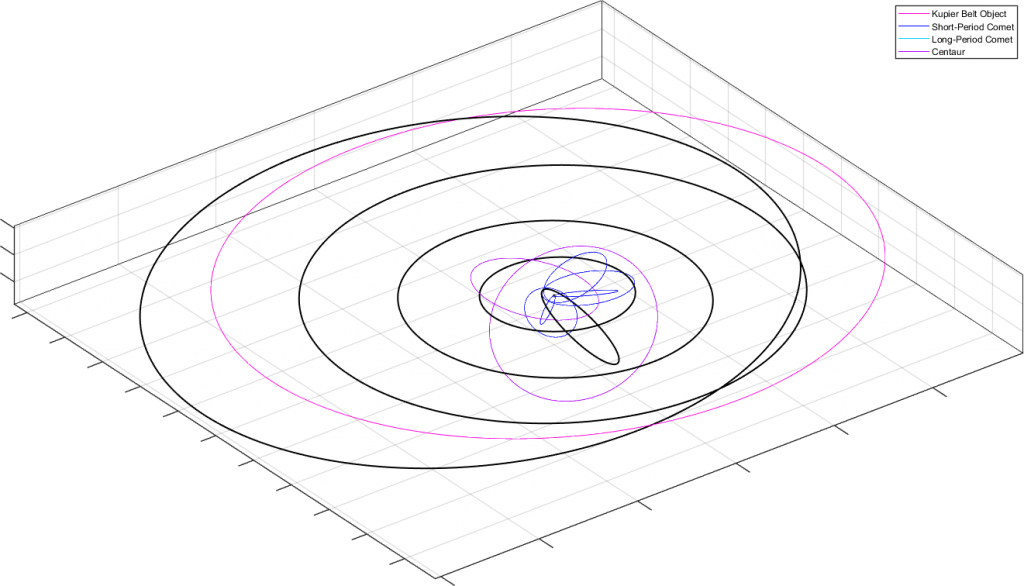|
Luciole Space Systems Official Progenitor Partner
The agreement was signed and hands were shook, making Luciole our new primary supply partner for parts and technology in relation to the Progenitor program. They will be completing the acquisition of Umbra Space Industries next month but have fast-tracked the settlement for the litigation brought against USI and this will allow us to launch Progeny rockets again in August! Preliminary dates have been set but mission details are still being finalized to stay in line with data collection necessary for the Progeny Mk8, so final dates and times will be announced next week.
Speaking of the Mk8, this will be a full-stack 0.625m orbital-capable launch vehicle made entirely of Luciole parts. The Mk7-C was originally supposed to be the next Progenitor iteration however although that was also supposed to be a full-stack 0.625m rocket it was to use USI parts brought forwards from the Mk7-B including the Boosterton II booster set to help loft the Ascension Mk3. Without continued flight use of the Boostertron II, we need to make sure the 4 we have for Mk7-B flights give us the data we need to help prepare for their use on the Ascension Mk3 debut flight, which we want to carry an actual payload. In the event the Boostertron II’s do not qualify for flight, we will still have access to the single-segment USI boosters.
Be sure to check the gallery above for a look at the Progeny Mk8.
Ascension Mk3 Lifter Engine Completes Initial Testing
Over the course of this month 3 WildCat-V engines were static fired on our vertical test stand. Each had small design tweaks to test various means of fuel pumping, engine bell structure and injection plates. All tests were full-duration, using all 7t of liquid propellants but varied in throttle ranges. None exploded or showed an obvious issues like flow separation or fuel feeding. The resulting data will now be studied closely by KW Rocketry engineers to determine if a final production model is ready. There is a chance they could want to do more design refinements, but if not then we could have the engine for the first Ascension Mk3 mission delivered by the end of the year for its early 2021 debut flight.
In additional Ascension program news the Mk1-B capsule design has debuted. More details on it will be shared after the test article arrives later this year. The next orbital payload, Kerbin II, has arrived at KSC for final integration with the Ascension Mk2 launch vehicle. While it is currently missing its RTG, that will be installed just prior to launch through a special fairing hatch so the heat it generates doesn’t build up inside the enclosed fairing and compromise it.
KerBalloon Deploys New Old Science Instruments
Since late 2016 we’ve been using the same standard instruments to perform experiments and gather data out in the field and their age has begun to show. A recent upgrade program was undertaken to outfit them all with new, more sensitive equipment to allow the various missions using them to collect additional data from environments we’ve already studied in addition to providing greater initial data for new environments. Some of the new instruments were put to use these past two weeks by the KerBalloon crews, taking on one mission each out to sea and across the land. Future Progenitor and Ascension missions will also take advantage of these upgraded science instruments.
Atmosphere-Skimming Asteroid Puts on Brief Show
This past week the small JLH-722(A) came grazing through the upper atmosphere. Because we saw it coming preparation was able to be made to observe it, although the first pass was easy to catch since it soared right between both Sheltered Rock and Ockr. Then came the mad scramble to attempt to spot it again before the second pass, assuming it had been captured. It exited the atmosphere towards the sun so it took a few days to come back around to the night side, indeed being captured into a decaying orbit. The second pass was just over the horizon from Arekibo but storms off in the distance blocked visibility and also potentially obscured any distant explosion from carrying to microphones listening at the observatory. If it had survived, modeling based on data from the first pass predicted it would appear again over Sheltered Rock but although clear skies prevailed that night nothing was seen. It has not been spotted again in space and has been considered lost after its pass near Arekibo.
ATN Database
The latest update for the Asteroid Tracking Network database is available here, containing 5,505 asteroids and 1 updated with new observation data. Here are the 39 asteroids that were discovered this past week.
 |
 |
From the Desk of Drew Kerman
Out of Character Behind the Scenes stuffWritten on 7/31/20
Another just-in-time entry here. Again though that doesn’t necessarily mean I’m in a bad position – I have a lot of notes and outlines for next month already that just need to be fleshed out which usually only takes a day or two to give me all the work I need to get done for the next month. Mostly it’s just been the same deal of spending lots of time gaming online with friends but also getting ready to open a new gymnastics gym that I could be spending more time working at next month, which is why the Mk7-B launches are so spread out even though both rockets are assembled and ready. So expect the overall pacing to continue.
Asteroid hunting
I finally was able to get back to work on pushing out my lead time a bit by getting back to finding asteroids, which I hadn’t done for a month but still have 4 months of work done in this regard. Going back to it though I had issues loading the saves with my thousands of asteroids each and spent like 2 hours trying to figure out why these saves were not loading before I realized I had forgotten a step in the process which uses a batch file to automatically unload mostly all of the mods from my GameData except for those that explicitly deal with asteroids. So annoying how it only takes a month for me to forget things – my brain is too efficient! It also reminds me that I have yet to take the time to detail this whole asteroid discovery process, something I’ve said I’d do since 2017 but there’s never any time! Although in this case if I had taken the hour or so to write it up and referenced it, I wouldn’t have spent ~2hrs “fixing” a problem…
Science redo with Kerbalism
I believe I mentioned this earlier but the new science system in Kerbalism is letting me redo all the experiments I already got and cashed in on previously under the stock science system. I’ve extended this idea to having the older instruments upgraded with better technology and also incurred an R&D expense for it, which will show up in the July financial report. While I can’t actually use KerBalloon in 1.9 because it hasn’t been upgraded (tho a new maintainer may be getting it up to 1.10 soon) I just attach a parachute to the equipment truss and have it fall slowly to give experiments enough time to run.
JLH-722
This was supposed to go longer, but I ran up against an inconsistency with the data. Because my asteroid stuff is so far ahead of normal operations, this event actually played out for me back in May and I just saved a lot of data from it to use now in July. Part of this was the actual asteroid track saved with Persistent Trails, which lets me see from the ground exactly where the asteroid traveled while in the atmosphere. So for example the image of it passing over Sheltered Rock is totally accurate as far as the position in the sky and the direction it appeared to be heading. But when it came to the third pass I couldn’t get Mission Architect, using the saved game data, to give me a pass that matched the trail saved for the pass. The 4th pass matched up though so maybe the error was something I was doing with the data from pass 3? In the end I just decided to kill it off and save myself time, but it actually had 8 passes before crashing into Kerbin. I was going to posit that the small rock managed to fuse from the heat and become stronger to withstand the aero forces through multiple passes, whereas a bigger rock would only see a portion of its surface heated up and still have cracks through which air pressure could get in to burst it apart.







